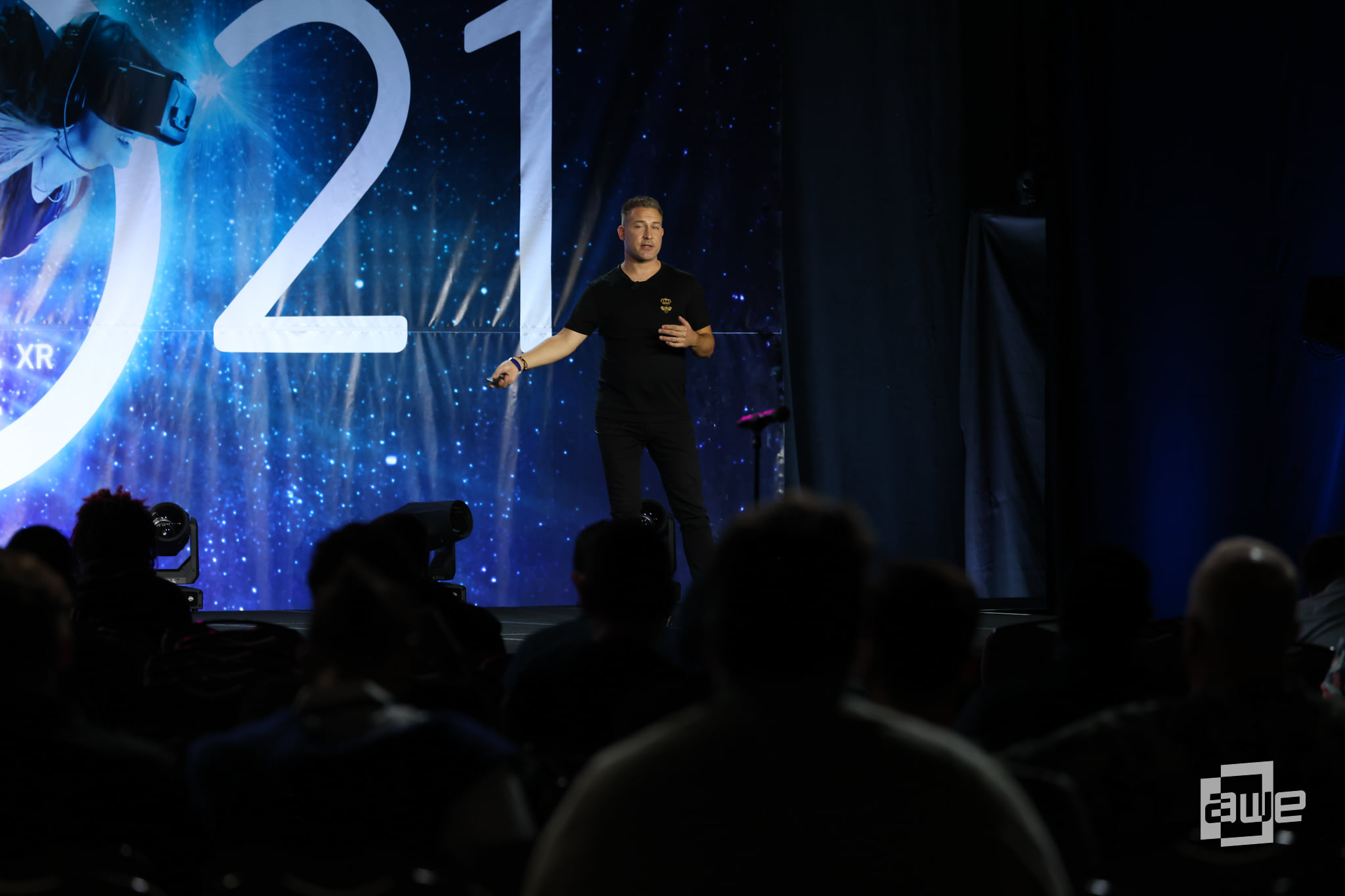Welcome back to AWE Talks, our series that plucks the greatest hits from the vast AWE conference archive. Fortunately, we now have a fresh batch of session footage from AWE USA 2021 to draw from. And 2022's show will already be here in June.
For this week's talk, we look at Tom Emrich's dive into tech history to inform its future. What are the lessons from the past? What things do we want to repeat (or not repeat)? Investors, innovators and oddsmakers would do well to study their history.
See the full video below along with quick-hit takeaways.
– According to Emrich, XR is the next leg of a technological journey that we've been on for decades.
– That progression is linear in being a part of the same evolutionary arc... but also cyclical in its patterns.
– The most insight can be gained from the past few tech revolutions: PC and mobile computing.
– Lessons for XR can be put into four groups: terminology, hardware, platforms/content, and culture.
– Starting with terminology, it evolves over time and does so organically, so don't get too hung up on it.
– Terminology is also shortened over time (web, net), and synonymous with leaders (Google, iPhone).
– Moving on to hardware, it typically defines a wave of computing as seen in the PC and smartphone.
– And hardware follows common origins including academia, military, and enterprise (often in that order).
– Devices also miniaturize over time while getting more powerful: a product and principle of Moore's Law.
– Connectivity tracks to that evolutionary path given the progression of capability with 2G, 3G, 4G, 5G, etc.
– Platform evolution also tracks to hardware evolution, with different leaders in each wave (think: iOS).
– That changing of the guard results from legacy thinking in older platforms and an innovator's dilemma.
– So who will be the new leaders in AR and VR? We're seeing some native players emerge already.
– Also, new platforms don't replace old ones but join them... we still use PCs along with smartphones.
– The same will likely happen with AR and VR... they won't replace but rather join PCs and smartphones.
– Lastly, culture is the x-factor that adopts and provides a model for demand-led product innovation.
– So if people aren't ready for a given technology, no matter how advanced it is, it's dead on arrival.
– This can be nudged by pop culture and Hollywood but ultimately sinks or swims on "cultural contracts."
– For more insights from Emrich (and a cameo from 8th Wall CEO Erik Murphy Chutorian), see below...
 Want more XR insights and multimedia? ARtillery Intelligence offers an indexed and searchable library of XR intelligence known as ARtillery Pro. See more here.
Want more XR insights and multimedia? ARtillery Intelligence offers an indexed and searchable library of XR intelligence known as ARtillery Pro. See more here.
For this week's talk, we look at Tom Emrich's dive into tech history to inform its future. What are the lessons from the past? What things do we want to repeat (or not repeat)? Investors, innovators and oddsmakers would do well to study their history.
See the full video below along with quick-hit takeaways.
– According to Emrich, XR is the next leg of a technological journey that we've been on for decades.
– That progression is linear in being a part of the same evolutionary arc... but also cyclical in its patterns.
– The most insight can be gained from the past few tech revolutions: PC and mobile computing.
– Lessons for XR can be put into four groups: terminology, hardware, platforms/content, and culture.
– Starting with terminology, it evolves over time and does so organically, so don't get too hung up on it.
– Terminology is also shortened over time (web, net), and synonymous with leaders (Google, iPhone).
– Moving on to hardware, it typically defines a wave of computing as seen in the PC and smartphone.
– And hardware follows common origins including academia, military, and enterprise (often in that order).
– Devices also miniaturize over time while getting more powerful: a product and principle of Moore's Law.
– Connectivity tracks to that evolutionary path given the progression of capability with 2G, 3G, 4G, 5G, etc.
– Platform evolution also tracks to hardware evolution, with different leaders in each wave (think: iOS).
– That changing of the guard results from legacy thinking in older platforms and an innovator's dilemma.
– So who will be the new leaders in AR and VR? We're seeing some native players emerge already.
– Also, new platforms don't replace old ones but join them... we still use PCs along with smartphones.
– The same will likely happen with AR and VR... they won't replace but rather join PCs and smartphones.
– Lastly, culture is the x-factor that adopts and provides a model for demand-led product innovation.
– So if people aren't ready for a given technology, no matter how advanced it is, it's dead on arrival.
– This can be nudged by pop culture and Hollywood but ultimately sinks or swims on "cultural contracts."
– For more insights from Emrich (and a cameo from 8th Wall CEO Erik Murphy Chutorian), see below...
 Want more XR insights and multimedia? ARtillery Intelligence offers an indexed and searchable library of XR intelligence known as ARtillery Pro. See more here.
Want more XR insights and multimedia? ARtillery Intelligence offers an indexed and searchable library of XR intelligence known as ARtillery Pro. See more here.



